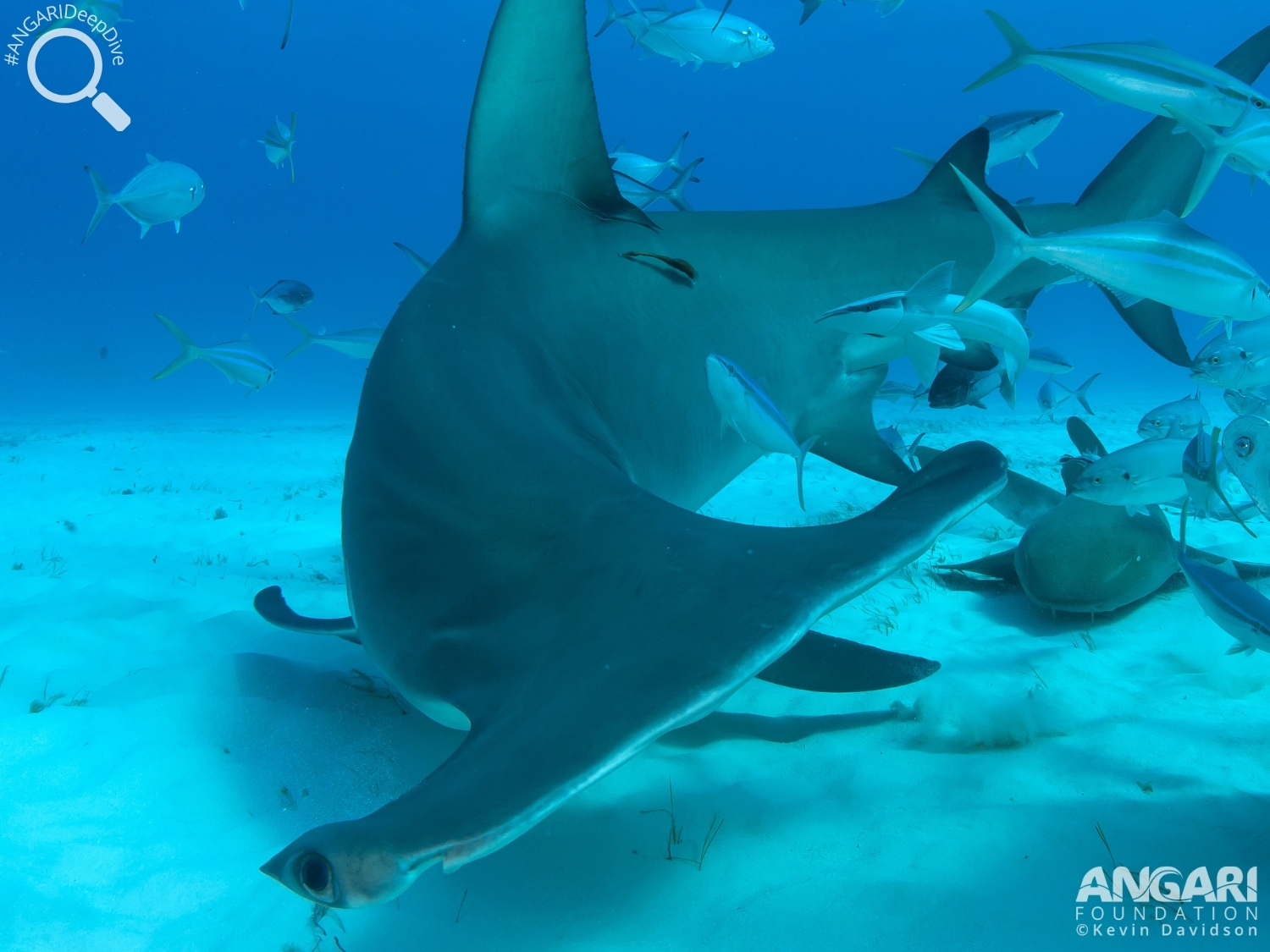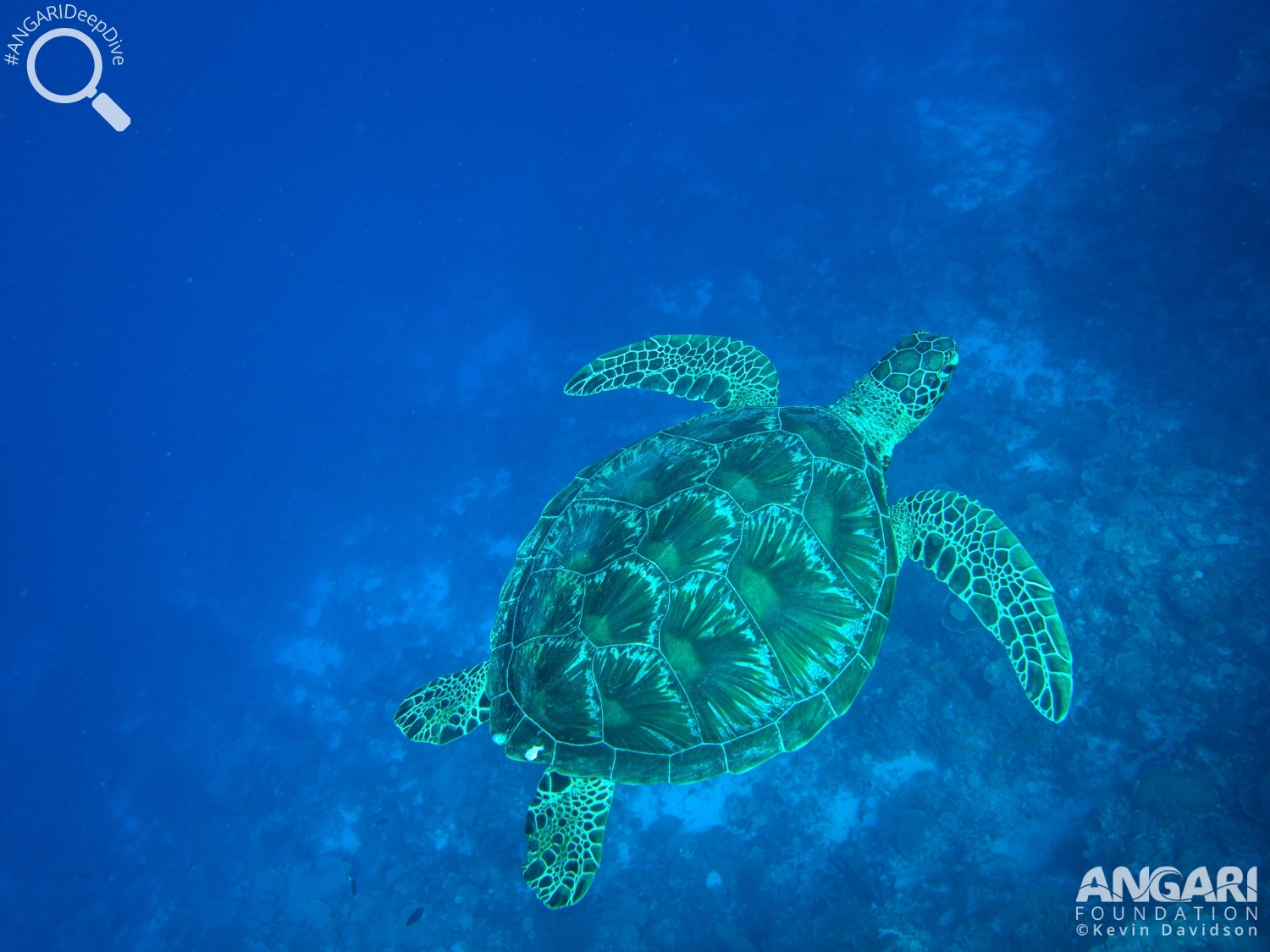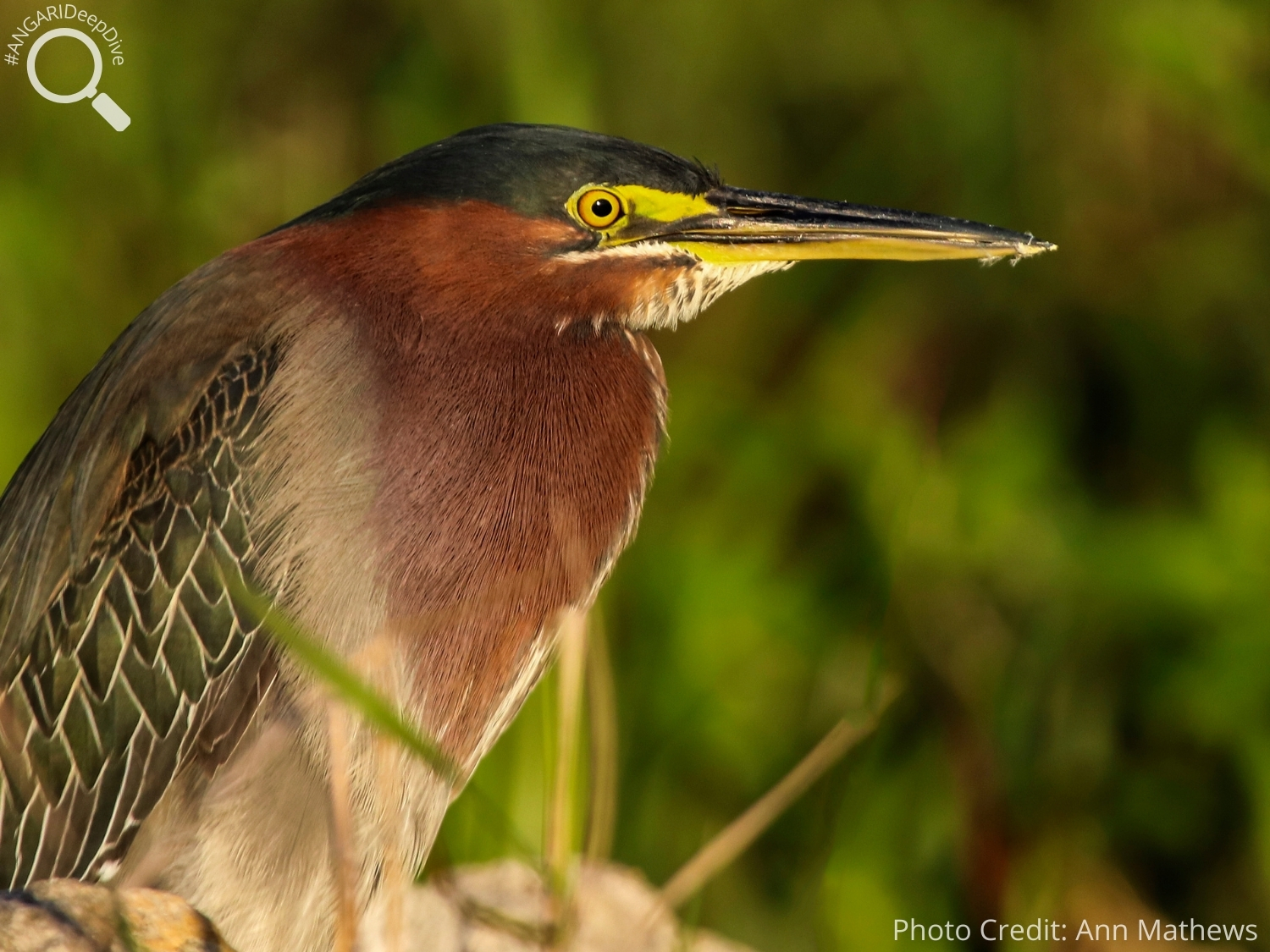The great hammerhead shark (Sphyrna mokarran) is an apex predator within the shark community and…
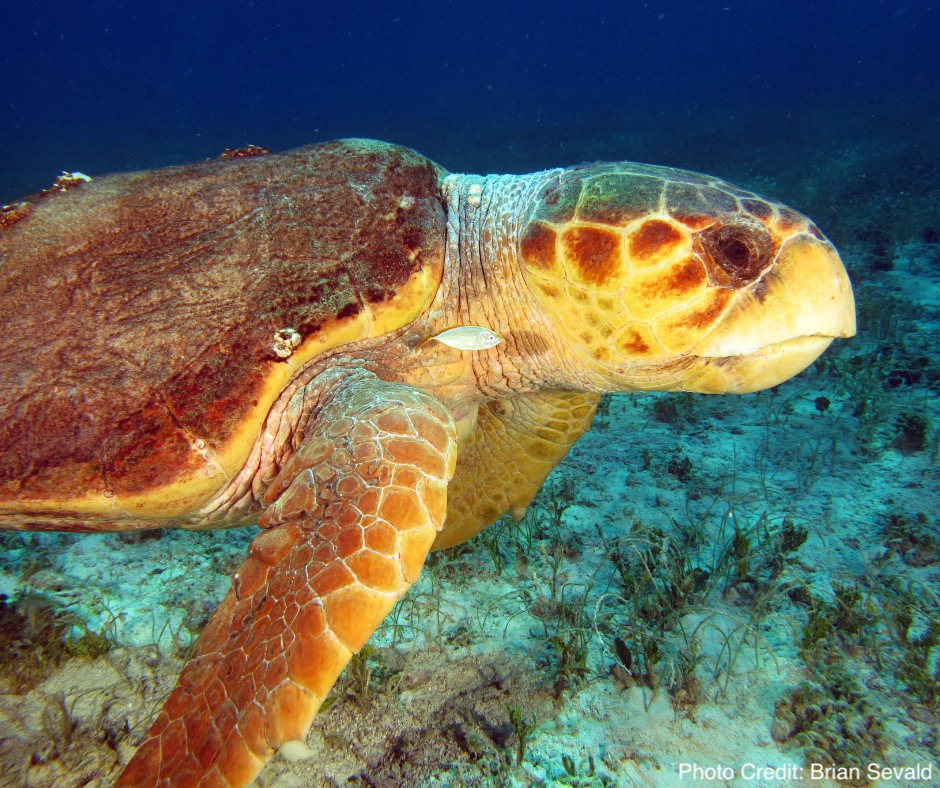
Loggerhead Sea Turtle (Caretta caretta)
The loggerhead sea turtle (Caretta caretta) is a highly migratory species of sea turtle that can be found in most of the world’s oceans. With a preference for coastal habitats in subtropical and temperate regions, they may travel hundreds of miles to reach their preferred destination.
Keep reading to learn some turtley interesting facts about the loggerhead sea turtle.
#1: Loggerhead sea turtles are omnivorous.
Loggerhead sea turtles get their name from their large heads. They are primarily carnivores and put their powerful jaw muscles to good use, crushing hard-shelled prey like clams, sea urchins and conchs. These sea turtles also eat jellyfish, shrimp, sponges, fish, and sometimes even seaweed and Sargassum.
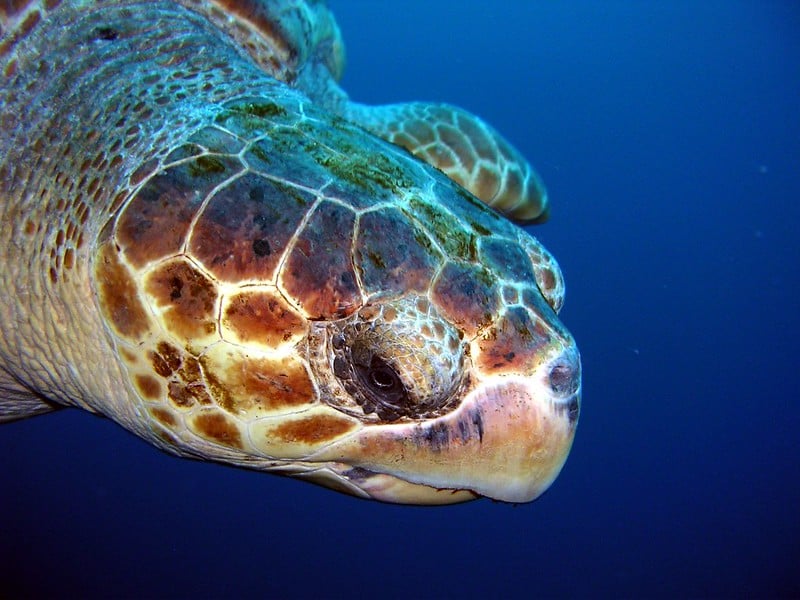
#2: Loggerhead sea turtles avoid freezing temperatures.
Loggerhead sea turtles are found across the globe! However, they are most common off the coast of the United States and Mediterranean Sea. The only places you won’t find them are in areas that reach freezing temperatures!
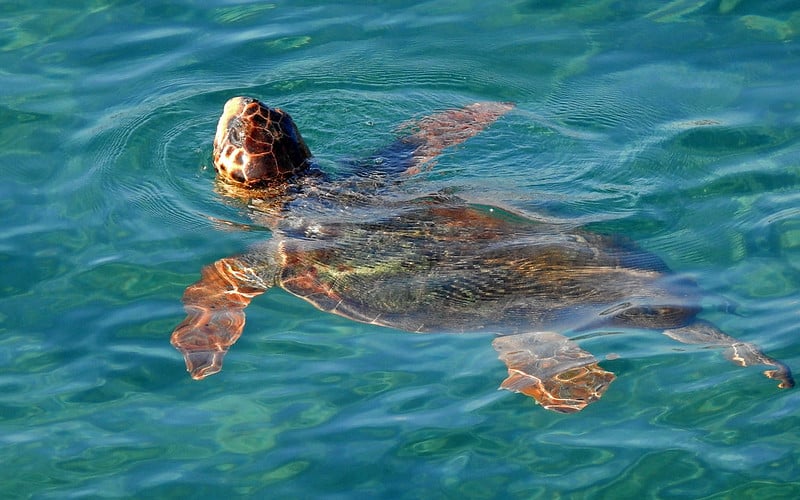
#3: Loggerhead sea turtles can live longer than humans!
Loggerhead sea turtles are very long-lived. Their average lifespan is between 70 to 80 years, but some live well beyond that!
Female loggerhead sea turtles reach maturity at about 35 years of age and reproduce every 2 to 3 years. After mating, female loggerheads return to nest on the same beaches where they hatched decades earlier!
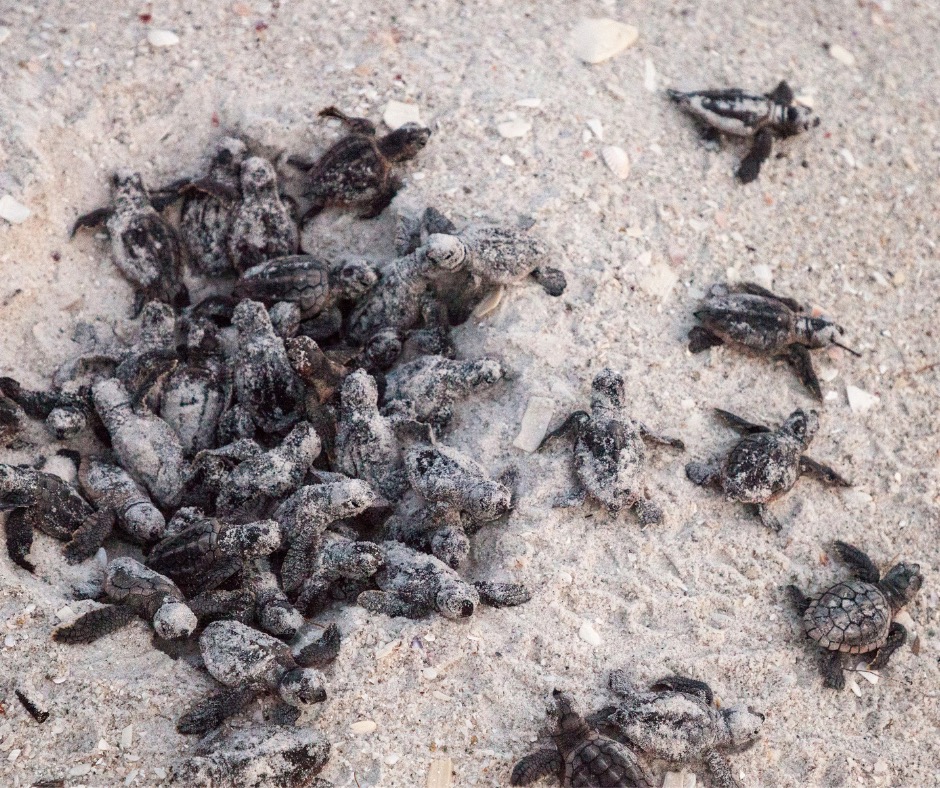
#4: Loggerhead sea turtles are a keystone species.
Loggerhead sea turtles are a keystone species, meaning other animals depend on their existence for survival. Loggerheads feed on many types of invertebrates and cycle the calcium from the critter’s shells back into the ecosystem. They also provide a unique habitat for 100+ species, including barnacles, crabs and algae, that live on the turtle’s shell!

#5: NOAA is helping to protect loggerhead sea turtles.
TurtleWatch is an initiative from NOAA that provides information about the thermal habitat of loggerhead sea turtles, particularly in the Pacific Ocean, north of the Hawaiian Islands. The goal of the project is to reduce the impact of longline fishing on the loggerhead sea turtle population. By telling fisherman which areas to avoid, NOAA helps to protect both the loggerhead sea turtles and fisherman.
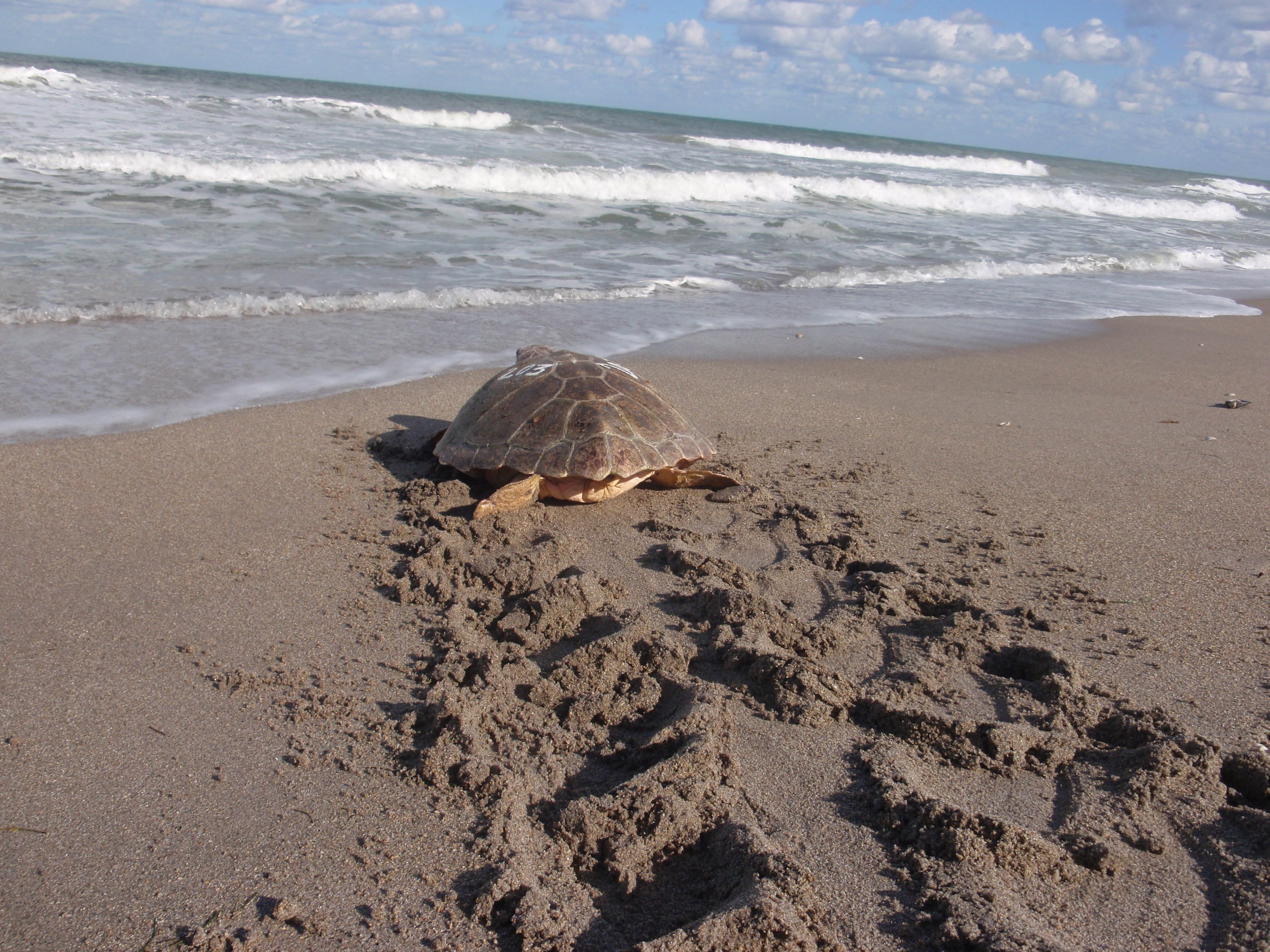
#6: Loggerhead sea turtles are really rather large.
Loggerhead sea turtles are typically 2.5 to 3.5 feet in carapace length, and they weigh between 155 and 375 pounds, although they can be even larger. They are among some of the largest sea turtles found in our ocean, along with green and leatherback sea turtles.

#7: Characteristics of a loggerhead sea turtle’s shell
The skin of a loggerhead is normally yellow and green with an off-white underbelly, and its carapace (shell) is reddish-brown in color. Their carapace is split into sections called scutes. Typically a loggerhead has 12 scutes on its carapace. but sometimes a deformity of the carapace can result in a few more or a few less.
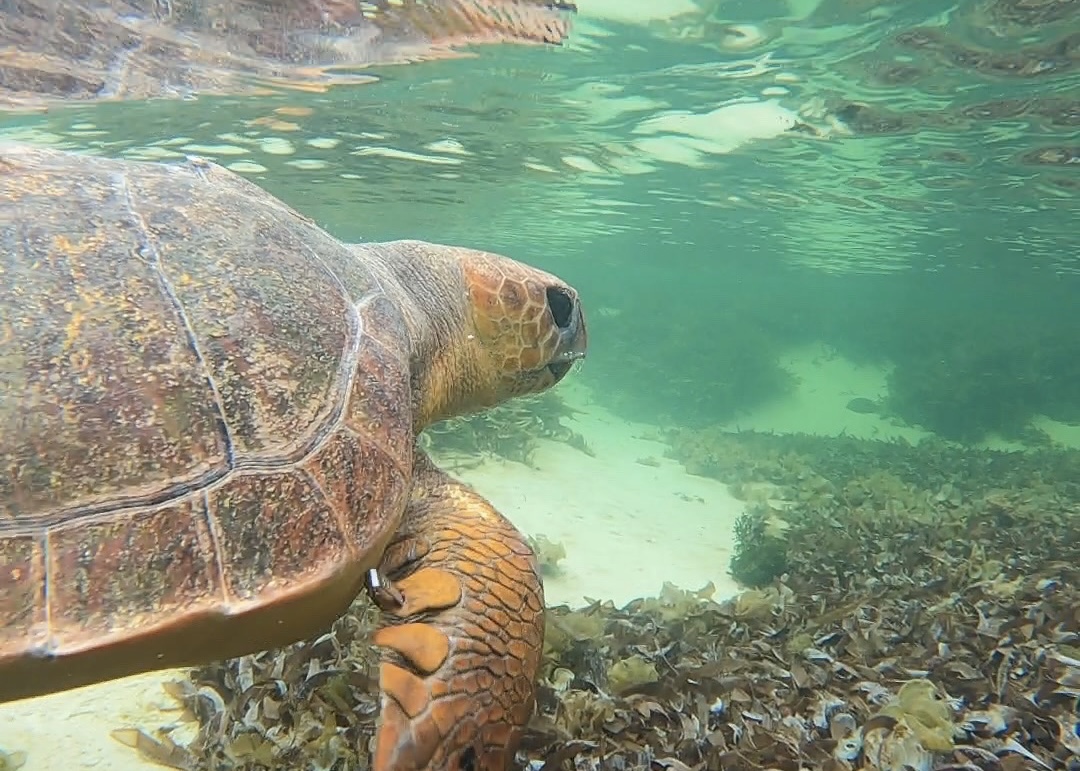
#8: Are loggerhead sea turtles protected?
The loggerhead sea turtle is protected under the Endangered Species Act. Their population is divided into nine subpopulations, all listed as either endangered or threatened, meaning that loggerhead populations face serious danger.
A variety of actions are being taken to help protect loggerhead sea turtles, including protecting nesting beaches, reducing bycatch and reducing entanglement and ingestion of marine debris.

Loggerhead sea turtles face a myriad of threats, including being caught as bycatch, loss of nesting habitat, vessel strikes, plastic pollution and climate change.
To help loggerheads, you can:
🐟 Consume sustainably caught seafood
♻️ Reduce plastic consumption and prevent debris from entering the environment
🏖️ Fill in holes and level sand castles on beaches to avoid trapping nesting turtles & hatchlings
🚫 Give sea turtles space both in the water and on land
🔦 Use sea turtle safe lighting to avoid disorienting nesting turtles & hatchlings
☎️ If you find a dead, sick or injured sea turtle in Florida, contact the FWC Wildlife Alert Hotline (1-888-404-FWCC)
Additional Loggerhead Sea Turtle Resources:
1. Olive Ridley Project – Loggerhead Turtle

